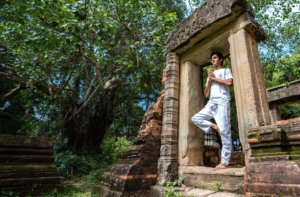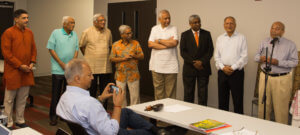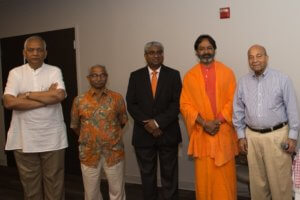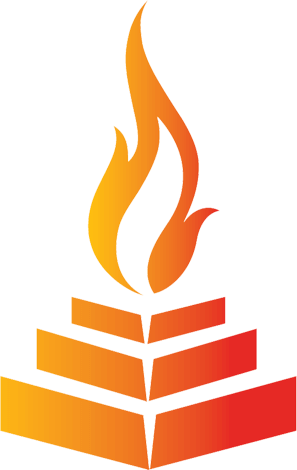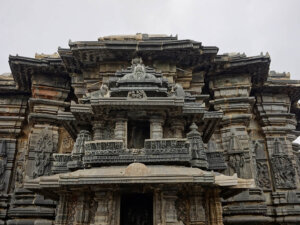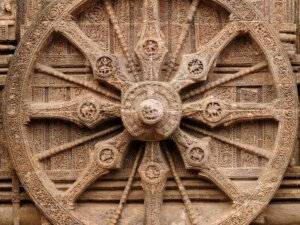Description
Certificate Program in Bhagavad-Gita through Samskritam
Program Code:
BGTS
Course Codes:
1011 – 1044
Credit Hours:
24 Quarter-Credit-Hours
Duration:
4 years

Program Description
The Bhagavad-Gita through Samskritam (BGTS) is a one of it’s kind program offered by the Hindu University of America to meet the dual objectives of 1) offering our students a comprehensive and structured approach to learning the Sanskrit language and 2) enabling them to learn and understand an important Sanskrit text and literary work, the Bhagavad-Gītā, in its original Sanskrit form. Students will gain the ability to read, write, comprehend, and interpret the text, as well as chant it in Sanskrit.
The Program aims to foster a deep appreciation for both the Bhagavad-Gītā and the highly systematic nature of Saṃskṛtam. Mastering Saṃskṛtam will allow students to directly engage with a wide range of original texts beyond the Bhagavad-Gītā.
The BGTS program serves as a strong foundation for students of all ages, starting from high school. This four year unique program also prepares students to pursue a Master of Arts in Sanskrit at HUA, opening doors to various fields of interest.
Program Learning Outcomes (PLOs)
At the completion of the program of study, students will be able to:
- Demonstrate proficiency in reading and writing in Devanāgarī script.
- Apply Saṃskṛtam vocabulary and grammar skillfully.
- Explain Saṃskṛtam texts in English, and vice-versa.
- Communicate in spoken and written Saṃskṛtam.
- Produce a variety of content in Saṃskṛtam.
At the completion of these 4 phases, students will have the option to take up further advanced studies in Sanskrit language through the Master of Arts Degree in Sanskrit at HUA.
Students will be able to participate in a “Higher Education” ecosystem that supports and enables advanced learning in Hindu studies as well as Sanskrit literary studies.
Who is this Program for?
The Bhagavad-Gītā through Samskritam is specifically designed for beginners aged 14 and above who have a strong passion for learning the Sanskrit language and obtaining an insight into one of the foremost texts of Sanathana Dharma, i.e, the Bhagavad-Gītā in it’s most pristine form as it was expounded in Sanskrit. The early exposure to an original Sanskrit text as well as the strong foundation this course provides is of interest to those wishing to delve into the rich texts and literature of the Hindu and Indic world, as well as its diverse derivative knowledge systems. No prior knowledge of Sanskrit is necessary, and the initial stage of instruction primarily utilizes English. As students progress in their proficiency with Sanskrit, the program will increasingly move to understanding and interpreting the Bhagavad-Gītā verses in Sanskrit at a comfortable and manageable pace for the cohort.
Prerequisites for the Program:
The foundational knowledge of Sanskrit is required for this program.
If a student has some proficiency in Sanskrit language or Bhagavad-Gītā, at the point of entry, an assessment may be done by the faculty to facilitate an entry for them at an appropriate phase of the course. However, the student may not earn the Program certificate if the total credit hours earned is less than 22.5. The student can earn a certificate of completion for that phase only.
How long will this program take?
The Program of Study is divided into four consecutive phases over a period of 16 quarters or 4 years. Each phase with 4 quarters, of 1.5-Credit hours per quarter, adds up to 15 hours of instruction and 30 hours of self-study. The student will have to earn 24 credits to complete this program.
In the event that students need to take a break, it is recommended for them to complete at least one phase before temporarily pausing their studies. To earn the BGTS completion certificate, the student must earn a minimum of 22.5 credits.
Students are strongly encouraged to enroll at least in one phase of study and fully commit to it for its entire duration. Our experience has shown that taking individual courses without committing to the entire phase may not provide optimal benefits for the students. Therefore, it is not recommended and even discouraged to take courses on an à la carte basis.
Structure of the Program
The certificate program consists of a total of 24 credit hours of coursework. Students have the option to complete it in 4 consecutive years earning 6 credit hours per year. Alternatively, they can choose to enroll in phases and complete one phase at a time. To achieve the best outcome from the program, it is recommended that students complete all the phases consecutively without taking a break. To earn the Program completion certificate students must complete a minimum of 15 courses successfully.
About Sanskrit :
Sanskrit as a language is essential to any meaningful study of original Hindu texts, devoid of interpretation and translation. For several millennia through modern times, Sanskrit has deeply ingrained itself into the lifestyle, traditions and culture of the Indian subcontinent and beyond. Sanskrit has also influenced several other Indo-European languages. Several original fundamental works in the field of medicine, mathematics, prosody, philosophy, astronomy, astrology and history that came out of the Indian subcontinent and beyond were composed in Sanskrit. A foundational study of this language is an exciting and insightful experience.
About Bhagavad-Gītā:
The tenets and teachings of the Bhagavad-Gītā and its impact on modern life are profound. Composed by Bhagavan Vyasa, this timeless conversation between Lord Krishna and the peerless warrior, Arjuna has intrigued, and inspired many of the greatest minds and thinkers through time immemorial. The Bhagavad-Gita teaches us the importance of duty, knowledge and action, the impermanence of material gains and imbibing a meditative calmness to enrich our lives in a stress-filled modern society.
Program Context:
Learning and mastering a new language brings immense joy. When that language happens to be Saṃskṛtam, the joy of learning is multi-fold, as it grants direct access to the key that unlocks the vibrant tapestry of the living Hindu civilization. It opens the doors to texts and narratives encompassing dharma, yoga, jñāna, art, music, dance, poetry, and diverse cultural and spiritual traditions. Mastery in Saṃskṛtam not only deepens our understanding of one of the oldest languages but also establishes a profound connection to the ancient texts of Hinduism. In this course, the students will directly engage with Bhagavad Gītā to gain profound insights into its teachings and philosophies, while also learning how to read and understand other similar texts.
The Bhagavad Gita is widely regarded as one of the most revered texts from the Sanskrit cosmopolis. It encompasses the core teachings of the Vedas and the Upanishads and has served as a guiding light for millions of people across the ages. The experience of learning to read the Sanskrit verses of the Bhagavad Gita without relying on an English translation can be truly enriching and fulfilling. In this course, students will have the opportunity to learn both the Sanskrit language and the Bhagavad Gita, verse by verse. This will not only nurture their confidence but also enhance their clarity in interpreting and representing Hinduism.
X
Certificate Program in Bhagavad-Gita through Samskritam
The tuition fee per credit hour for BGTS courses is $200. The total cost of the Certificate program with 24 credit hours is $4,800 plus a one time non-refundable administration fee of $100 and $95 towards the cost of books, making it a total of $4995.
However the following payment options are available:
- Pay upfront for the full 4-year Program: Total cost $3795.
- Pay by Phases for 4 year-long phases : Total cost $4495.
- Pay by Quarter for the full 4-year Program: Total cost $4995.
Payment Plan Options:
US Students:
- Pay in full for all four years – $3795
- Pay for the Beginner Phase – $1136
- Pay for the Intermediate Phase – $1136
- Pay for the Advanced Phase – $1123
- Pay for the Proficiency Phase – $1100
- Pay by Quarter for the Full Program – $4995
Non US Students:
- Pay in full for all four years – $3748
- Pay for the Beginner Phase – $1118
- Pay for the Intermediate Phase – $1118
- Pay for the Advanced Phase – $1112
- Pay for the Proficiency Phase – $1100
- Pay by Quarter for the Full Program – $4948
From: $309.25 every 3 months for 48 months
Before you choose a payment plan, and get enrolled in the Certificate Program in Sanskrit Proficiency, please make sure that you have completed the following steps.
- Applied for the Program.
- Reviewed the enrollment agreement form.
- Determined your payment plan.
After all of the above steps have been completed, please choose a payment plan below and pay your fees.
Select a payment plan below (pricing includes the cost of books):
X
Tuition and Payment
The tuition fee per credit hour for BGTS courses is $200. The total cost of the Certificate program with 24 credit hours is $4,800 plus a one time non-refundable administration fee of $100 and $95 towards the cost of books, making it a total of $4995.
However the following payment options are available:
- Pay upfront for the full 4-year Program: Total cost $3795
- Pay by Phases for 4 year-long phases : Total cost $4495
- Pay by Quarter for the full 4-year Program: Total cost $4995
Payment Plan Options:
US Students:
- Pay in full for all four years
$3795 - Pay for the Beginner Phase
$1136 - Pay for the Intermediate Phase
$1136 - Pay for the Advanced Phase
$1123 - Pay for the Proficiency Phase
$1100 - Pay by Quarter for the Full Program
$4995
Non US Students
- Pay in full for all four years
$3748 - Pay for the Beginner Phase
$1118 - Pay for the Intermediate Phase
$1118 - Pay for the Advanced Phase
$1112 - Pay for the Proficiency Phase
$1100 - Pay by Quarter for the Full Program
$4948
X
FBL Examples
Example # 1:
Priya (a hypothetical student) is interested in learning more about her family’s ancestral lineage and in enhancing her knowledge and practice of yoga in India. She lives in the United States and is the mother of a young child, so she will not be able to stay at a Yoga Gurukulam for an extended period of time. Priya has located a particular site for her FBL, which meets the criteria. They understand her responsibilities and have told her that a one or two-week stay at the Gurukulam is sufficient; she is able to manage this. She will participate in online courses with the Gurukulam, before and after her stay and is already thinking about how she can make connections with her HUA coursework in Yoga Sutras of Patanjali and other Yoga related courses.
Example # 2:
Kevin (a hypothetical student) is a musician who has been drawn to the spiritual foundations of Bhakti music. He lives in the USA, and is part of a Performing Arts Orchestra, who has been dabbling with his own musical creations based on the Vedic teachings. He is able to visit India for an extended period of time, and designs a 3-month immersion experience for his FBL with a Partner institution in India, which specializes in Classical Indian Music. He is also simultaneously learning Sanskrit through HUA and will be working on developing a deeper appreciation of the lyrics and their meanings from within a Hindu spiritual context. He will be making connections between his HUA coursework on Sanskrit as well as in Hindu Philosophy with the compositions of the Bhakti saints of various genres through his FBL.
Example #3:
Darshana (a hypothetical student) is interested in understanding the Ashram experience more fully. She is able to spend a substantial amount of time at an Ashram in the United States. She combines that experience with a quick 3-week Ashram tour of India to Rishikesh, Coimbatore and Belur, where she is able to develop an immersive understanding of the Ashram experience across multiple Hindu traditions. Her FBL is managed through the relationship with the Ashram in the USA and is able to also incorporate the 3-week travel to India to visit and experience several Ashrams. Through these varied Ashram experiences, she is able to incorporate new practices in her own life, after experimenting briefly with multiple practices being offered at these various sites.
